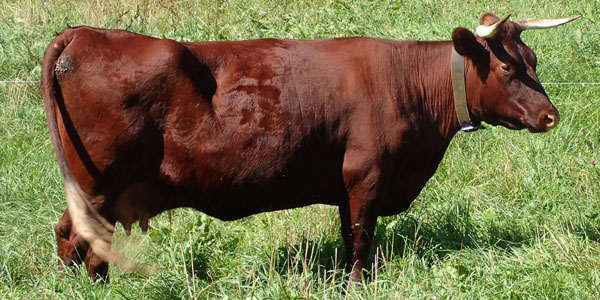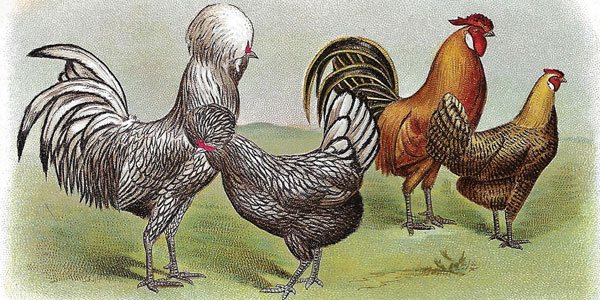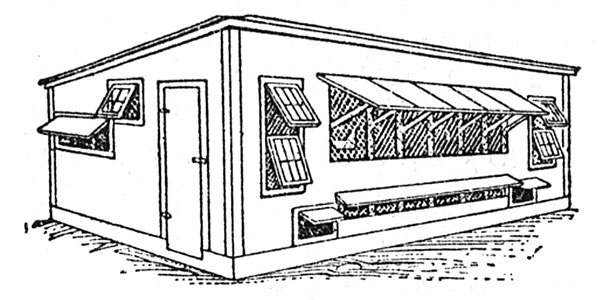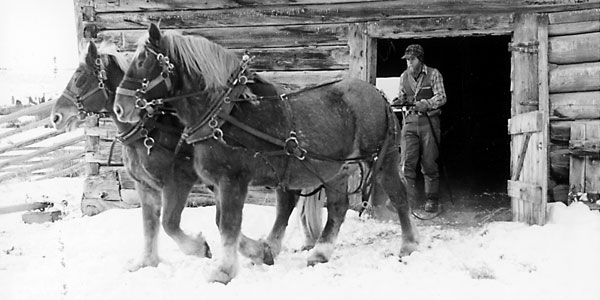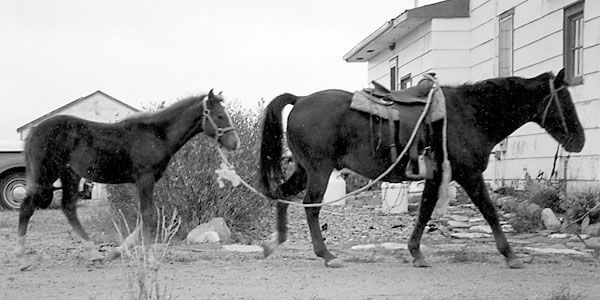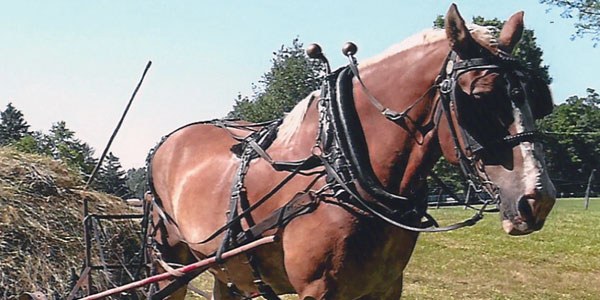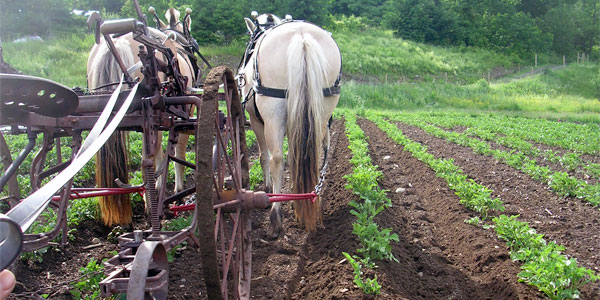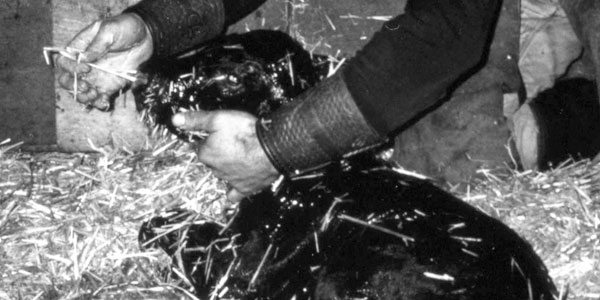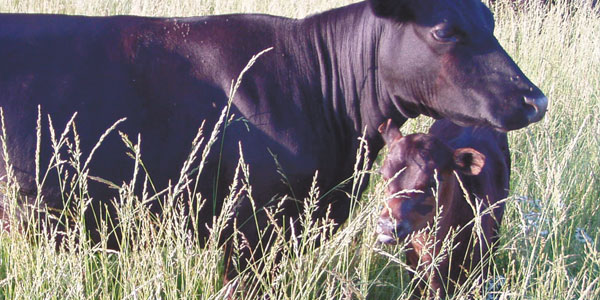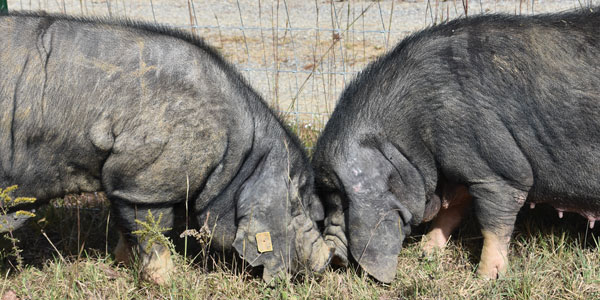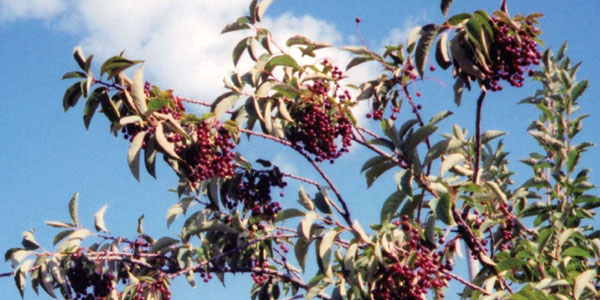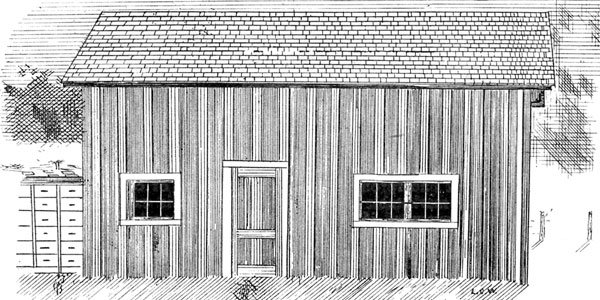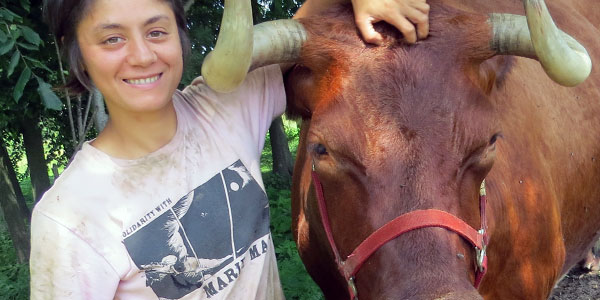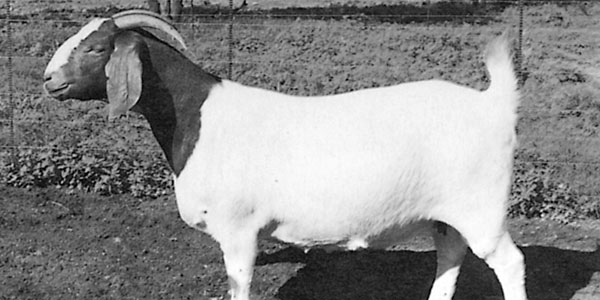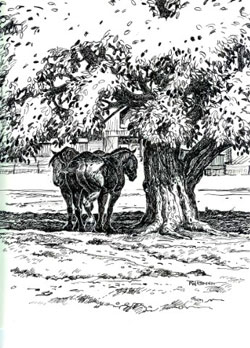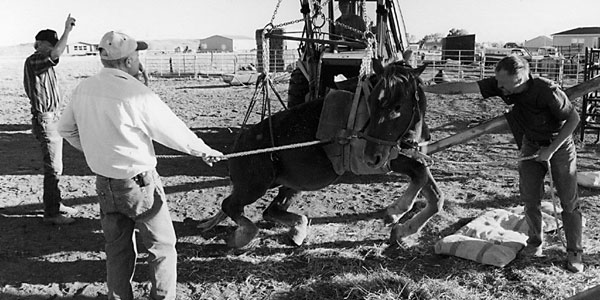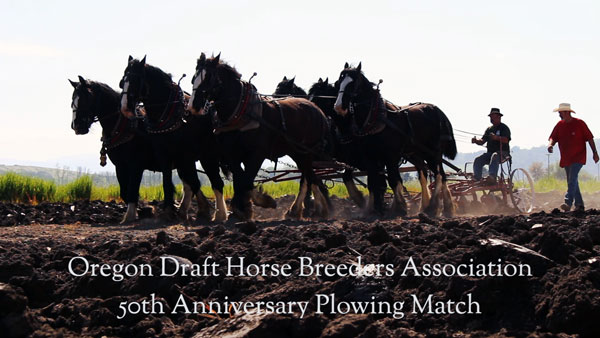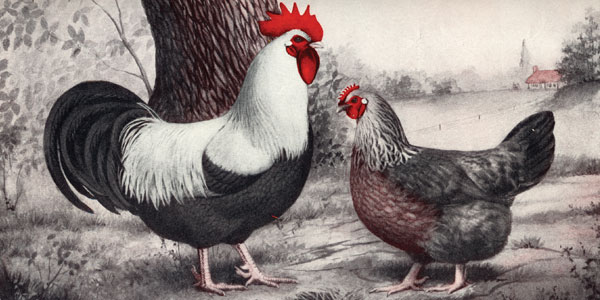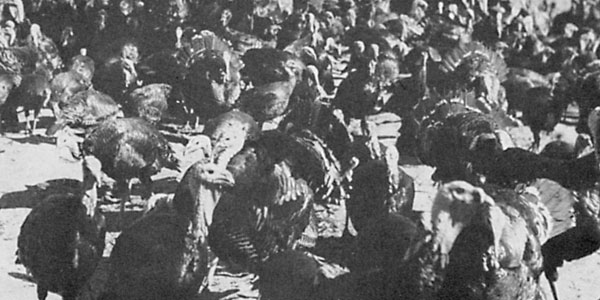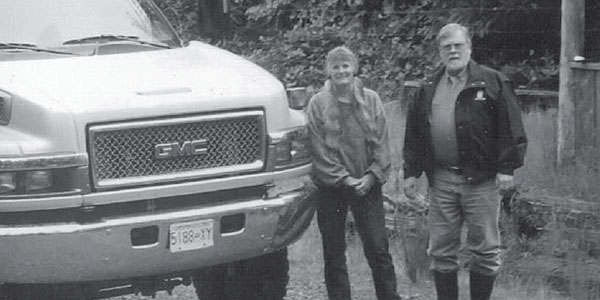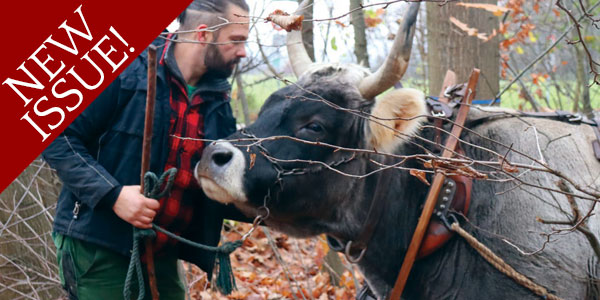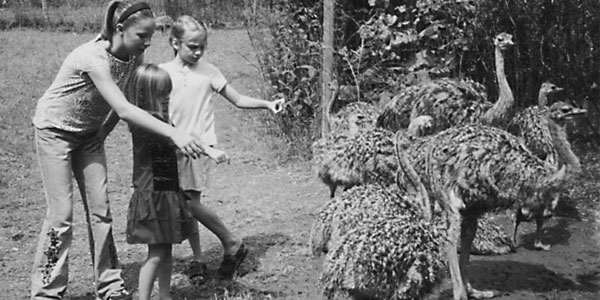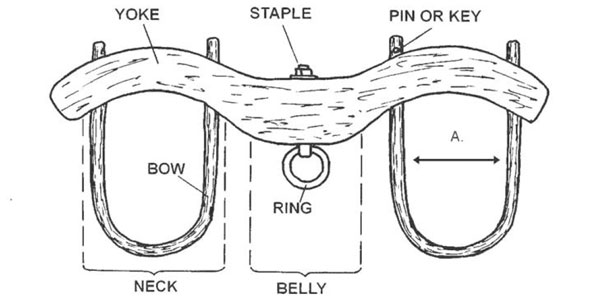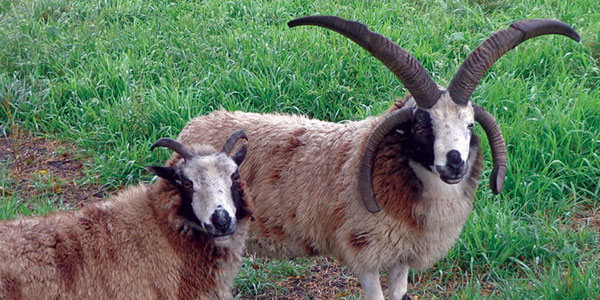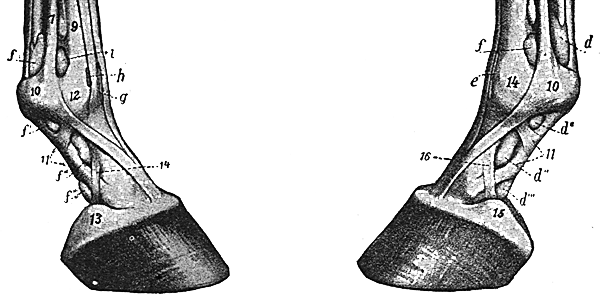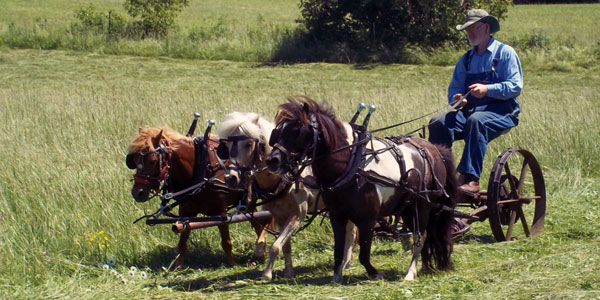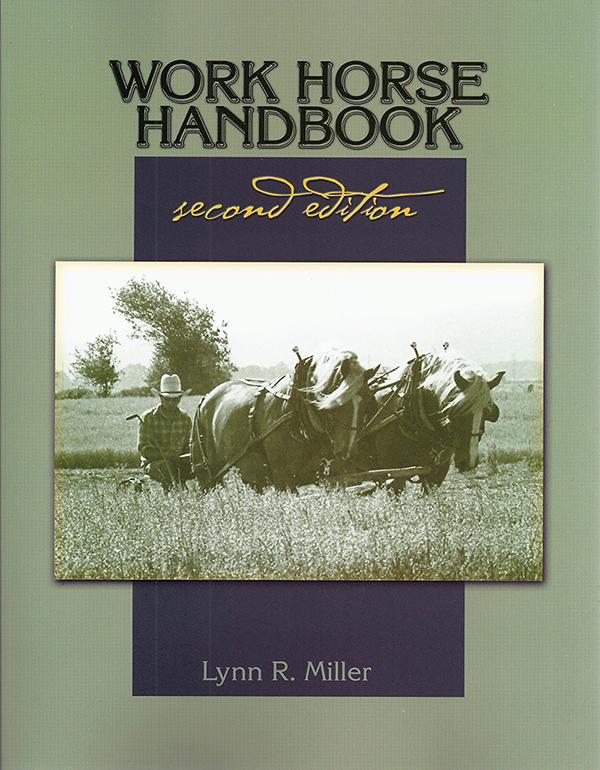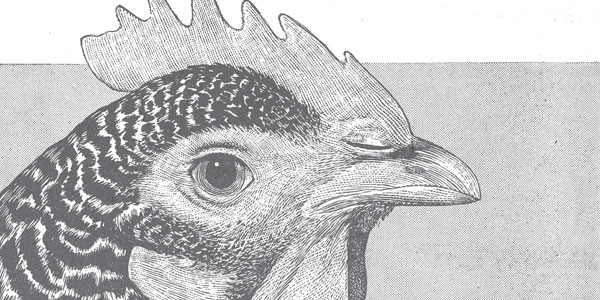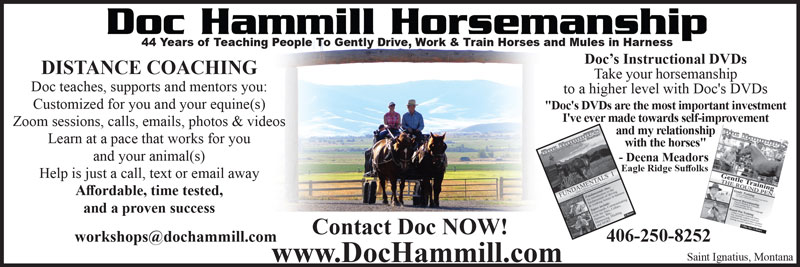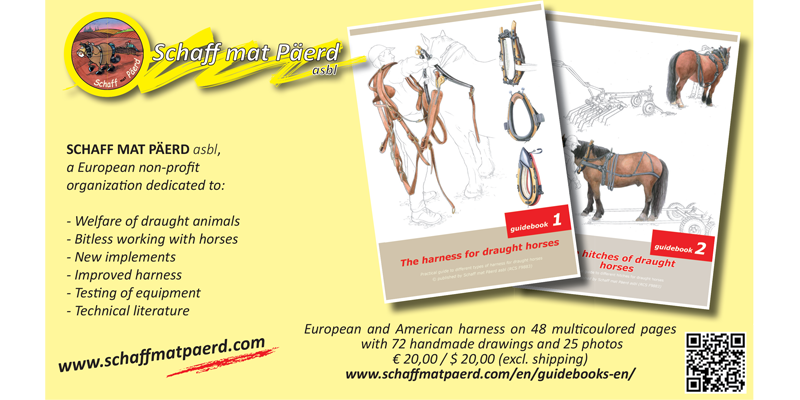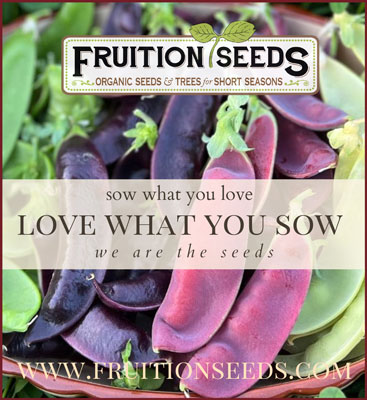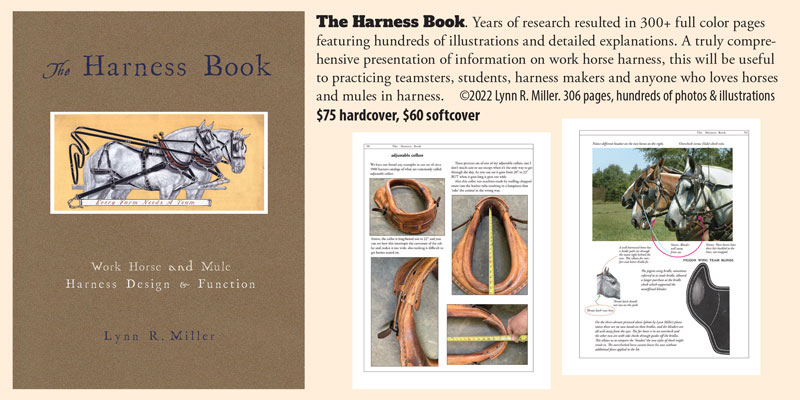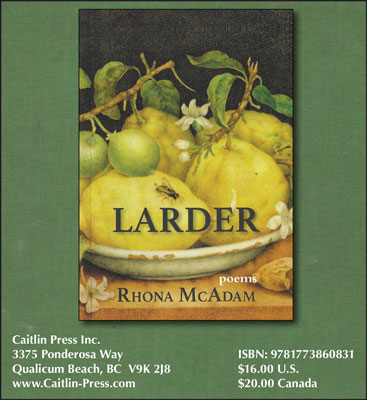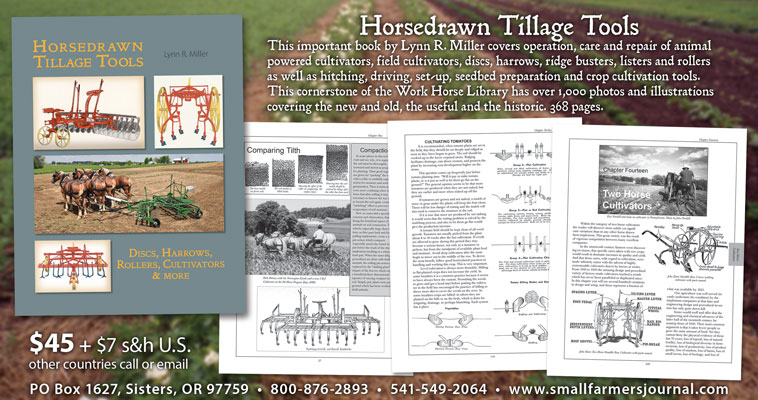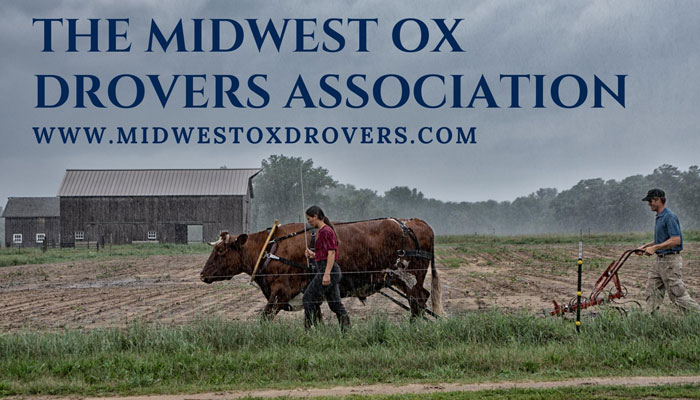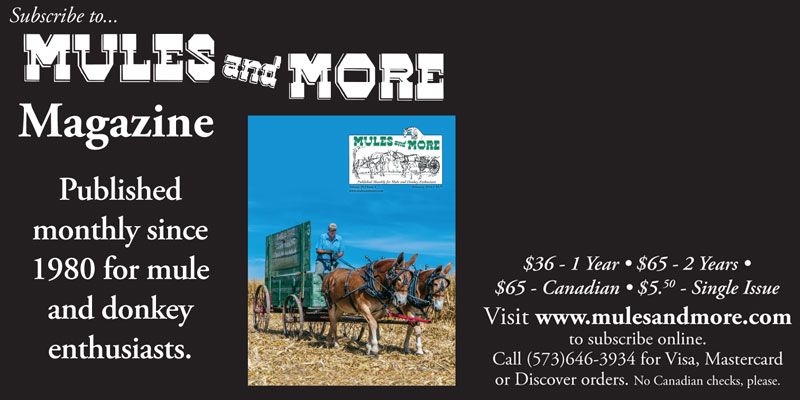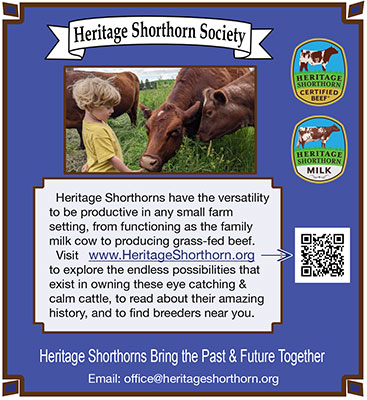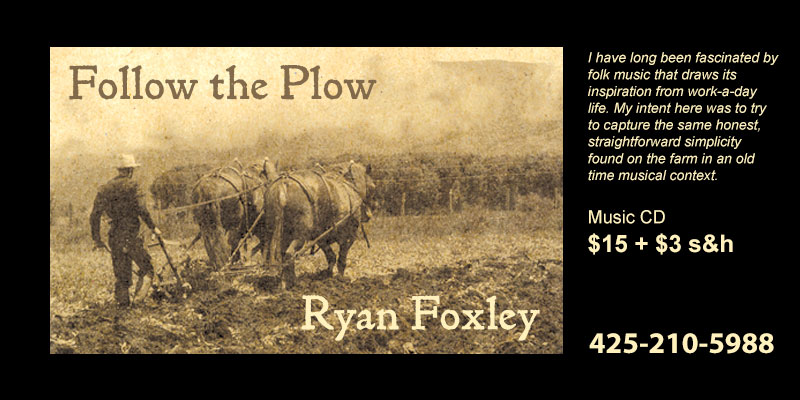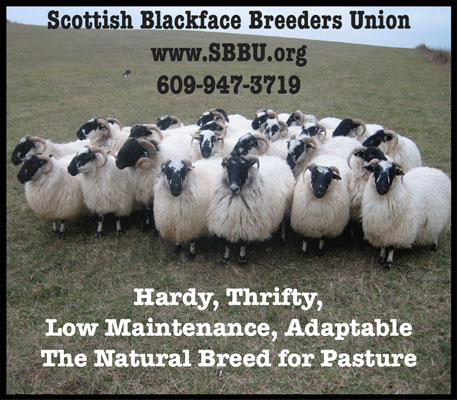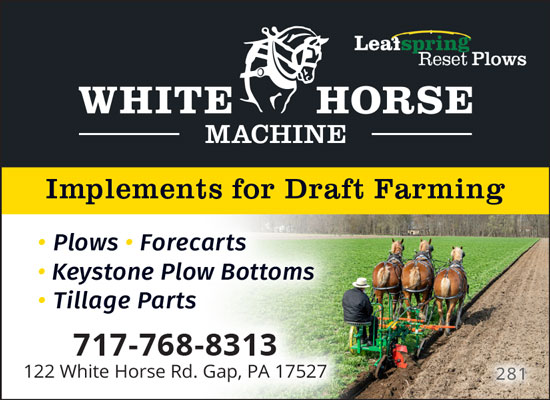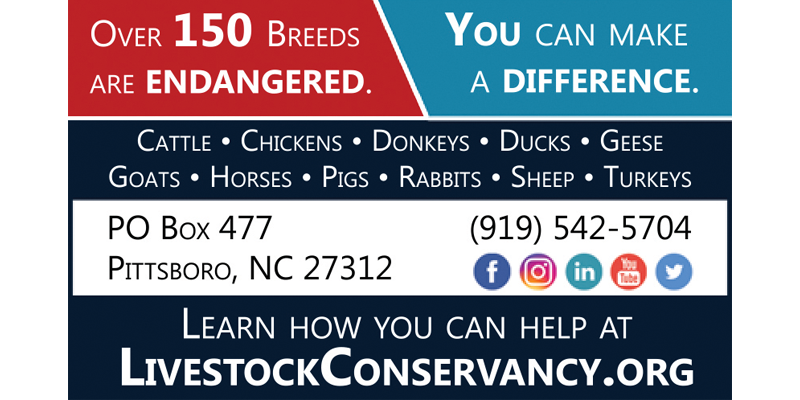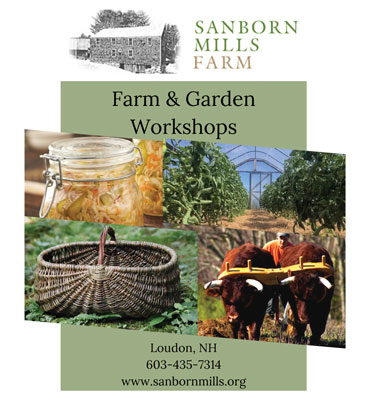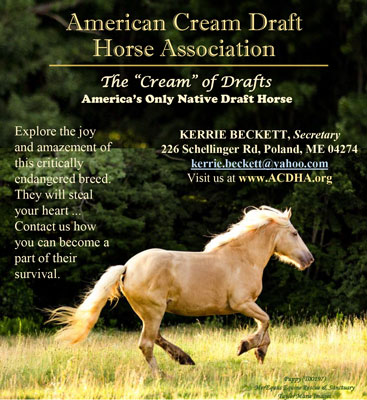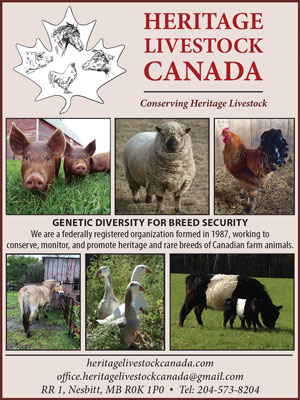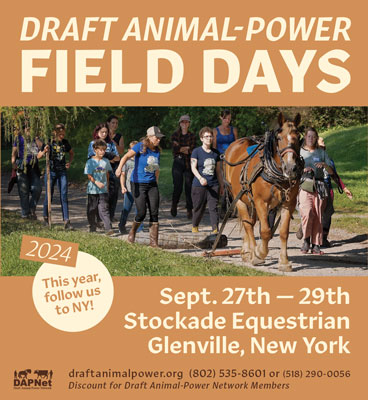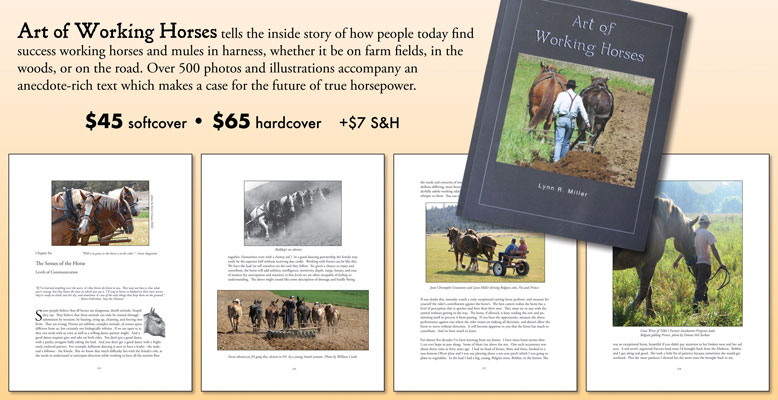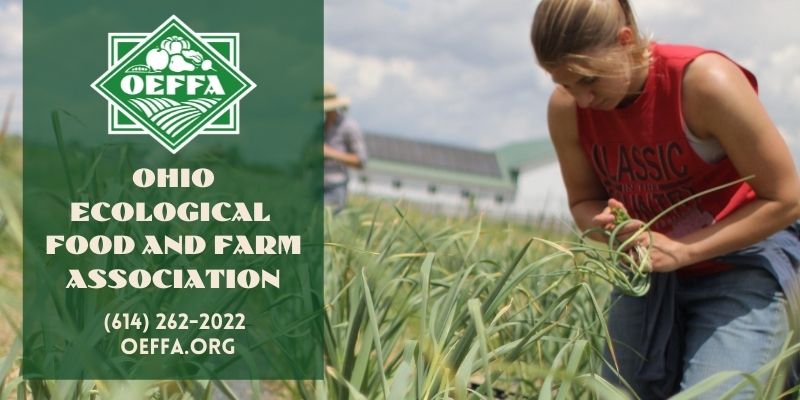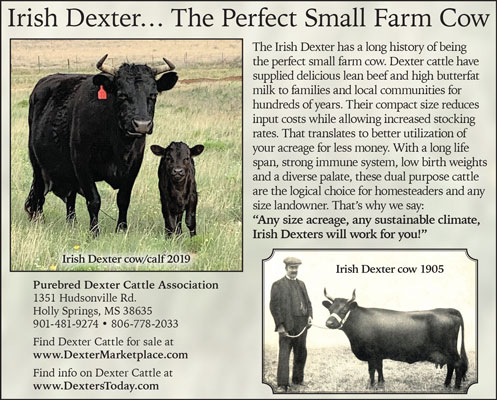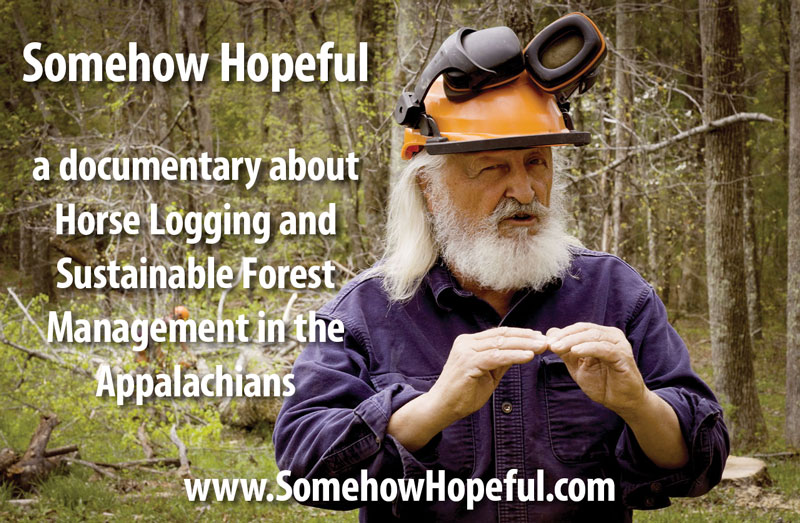MONDAY
April 15, 2024
Ground Driven PTOs
One of the ways tractors both gained and maintained their appeal is from the wider range of machinery they can power with the PTOs they carry. This definitely gave them the advantage over draft power. But is it going to stay that way? It may not have to be on a small farm. During the horsepower road trip Khoke and I went on a couple years ago, we got to see some examples from folks who knew which side of the fence they were on. We saw a number of machines that were reworked and reinvented to make them run off the power source of their choice, namely horsepower.
TUESDAY
April 16, 2024
Headlight Grape
One of the things long desired by Southern fruit growers is a good table grape, sufficiently resistant to leaf and fruit diseases to endure the climatic conditions of their section. Many varieties have been brought forward from time to time; but of the older sorts especially adapted to table use not one, either foreign or native, has yet proved successful over any large area. One of the most promising recent introductions in this field is the Headlight, which was originated by Prof. T.V. Munson, of Denison, TX, in 1895.
WEDNESDAY
April 17, 2024
John Deere Model HH Spreader
Check the adjustments on your spreader and make sure they are in proper operating condition. Hitch your team to the empty spreader to limber it up and see that it is working properly before loading. If you will turn the beaters over by hand before starting to the field, the spreader will start easier and will prevent throwing out a large bunch of manure when starting.
THURSDAY
April 18, 2024
Lost Apples
The mindboggling agricultural plant and animal diversity, at the beginning of the twentieth century, should have been a treasure trove which mankind worked tirelessy to maintain. Such has not been the case. Alas, much has been lost, perhaps forever. Here are images and information on a handful of apple varieties from a valuable hundred year old text in our library.
FRIDAY
April 19, 2024
American Milking Devons and the Flack Family Farm
On a sunny early September day I met Doug Flack at his biodynamic and organic farm, just South of Enosburg Falls. Doug is an American Milking Devon breeder with some of the best uddered and well behaved animals I have seen in the breed. The animals are beautifully integrated into his small and diversified farm. His system of management seems to bring out the best in the animals and his enthusiasm for Devon cattle is contagious.
Are you getting the SFJ Home & Shop Companion?
The Home & Shop Companion is a free weekly email newsletter. It features stories, handy hints, recipes, news, offers, projects, distractions and other stuff we think you’ll find interesting. The entire series is archived here on the website and is free to all to browse: Home & Shop Companion Archive.
SIGN ME UP FOR THE HOME & SHOP COMPANION!
Explore Small Farmer's Journal: Livestock
Poultry Breeds
Poultry Breeds – Partridge Cochins • Light Brahmas • Silver Polish • Silver-Gray Dorkings • Barred Plymouth Rocks • Silver-Laced Wyandottes • Langshans • Buff Cochins • Single-Comb Brown Leghorns
Poultry Housing Indicators & Designs
Success with raising poultry, whether for eggs or meat, feathers or breeding stock, all of it depends on keeping the birds healthy and vigorous – and one important element in that equation is housing. Good breeding and the best feeding are vitally important but even those factors won’t get you maximum return unless the birds enjoy the best possible, disease-free, environment.
Salt Requirements of Animals Differ
Each animal has its individual salt requirements. Some want more than others… they need more for proper animal metabolism. A steer on a winter ration of roughage will require much more than a steer on a fattening ration of roughage and grain. Similarly, sheep will require more salt than other animals. A milk cow, giving off salt in every pound of milk will require more than a beef cow. To be sure, it is a good thing to mix salt with the grain ration. But additional salt should also be fed Free Choice so that each animal can help itself to the salt it needs, when and where it wants it.
Ask A Teamster: Ten Common Wrecks with Driving Horses
One of the things I’ve learned over time is that the truly great teamsters rarely – if ever – have upset horses, close calls, mishaps or wrecks, while the less meticulous horsemen often do. Even though it may take a few minutes longer, the master teamsters constantly follow a series of seemingly minute, endlessly detailed, but always wise safety tips. Here are 10 of them:
The Hog Drovers
Hogs used to walk to barns and markets rather than ride in double-decker trailers and snooze in air-conditioned barns. Modern confinement systems, 18-wheelers, and hydraulic carts have relegated hog driving to a lost art, and swine drives are only farrowing-house conversation topics. However, a couple generations ago, farmers moved hogs the old-fashioned way. They drove them. Hog drovers have gotten little attention from historians, novelists, and TV producers in painting romantic pictures of frontier agriculture. They’ve concentrated on rope-smart cowboys trailing herds of white-faced cattle. Hog drovers didn’t get much glamour. They wore bib overalls and walked, but some of their roundups were colorful and impressive.
Cookies for Josephine
We calve in January and February, and some years it can be very cold – and we calve the cows in a barn. Most of the older cows go into the barn readily because they’ve been there before. But the first-calf heifers are a different story. Many of them are hard to get into the barn. We solve this problem with a Judas cow – a gentle, older cow who leads the heifers into the barn. Even the wildest or most timid heifer will usually follow another cow. The old cow serves as security for the timid young heifer, and into the barn they go.
Feeding Elk: Winter Work for the Belgians
Doug Strike of rural Sublette County is spending his second winter feeding wild elk in nearby Bondurant, Wyoming. Strike is supplementing his logging income as well as helping his team of Belgian draft horses to keep in shape for the coming season. From May to the end of November he uses his horses to skid logs out of the mountains of western Wyoming. I found the use of Doug’s beautiful Belgian team an exciting example of appropriate technology.
How to Choose a Cow
Not every farmer or dairyman can qualify as an expert judge of cows, but every herd owner can pick high and profitable producers by sticking to certain principles. It’s a matter of pedigree, production and type or form. But only an estimated one out of every 20 dairy cows is purebred and registered, with a pedigree. The number of cows on which there are production records is only slightly larger than that. Hence most dairymen and farmers choose a cow on looks alone, that is, on her type and form at certain key points of the body.
American Suffolk Horse Association
The homeland of the Suffolk horses is Norfolk and Suffolk counties. It is bordered on the north, east and south by the North Sea and on the west by the Fens. Isolated from their neighbors, the farmers of Suffolk independently developed breeds of livestock to fit their special way of life. The first Suffolk Punch draft horse arrived in North America in 1865, going to Canada. All the Suffolks who were offspring of those imported were registered with England’s stud book until the American Suffolk Horse Association was first incorporated on February 17, 1911, in Illinois.
Lamb Slaughtering & Cutting
On account of their size, lambs lend themselves for use on the farm more readily than do other farm animals. They can be consumed in a short period of time and for this reason are not generally cured. Also because of the fact that mutton is a drier meat and does not contain much soft fat, it does not lend itself to curing as well as do other meats.
History of the Block Horse
Until 1994 these horses had open reign on the Suffield military base in southeastern Alberta, moving freely across one of the largest block of native prairie in the world. The Government had expropriated the land in 1941 from the ranches who had established successful operations more than thirty years earlier. It was then used by the British military for training. Up to the mid-1960’s the horses on the British Block were loosely managed by local ranchers. During this time plenty of good old line Quarter horse, Thoroughbred and other breeds, as well as sound usable ranch horses were turned out. In about 1965 the military fenced the base, cutting off access to the herds for local ranchers. From then until the roundup on 1994, the horses survived unmanaged. They started out as high quality stock and natural selection did its thing, resulting in phenomenal horses.
Are You Working Your Horses?
I would imagine that at least for those with draft horses, many may have some intention of working those animals in some capacity on their property. These goals will vary from those who would like to do all the draft work on their place with a horse or team, to those who never plan to do more than wagon or sled rides or perhaps a little hauling of materials around the farm or homestead. My main interest is in thinking through some issues I believe those who really mean to use their draft animals, for farm work or logging or for regular hauling projects, may encounter as obstacles to really achieving those goals.
Fjordworks: Horse Powered Potatoes Part 1
This is the account of how one farm put more horse power into the planting, cultivation, and harvesting of its potato crop. Ever since we began farming on our own in 1994 one of our principle aims has been the conversion of our farm operation to live horse power wherever feasible. This has meant replacing mechanized tools such as tractors and rototillers and figuring out how to reduce human labor as we expanded upon the labor capacity of our work horses.
Calves that Don’t Breathe at Birth
Heart rate is one way to tell if the calf is in respiratory distress, since it drops as the body is deprived of oxygen. Normal heart rate in a newborn calf is 100 to 120 beats per minute. Place your hand over the lower left side of the ribcage, just behind and above the elbow of his front leg. If heart rate has dropped as low as 40, the calf ’s condition is critical; he needs to start breathing immediately.
A Guide to Raising and Marketing Rosé Veal
Here at Providence Farm, we produce what is referred to as “rosé veal,” though we aim to make clear that not all rosé veal is the same. Some rosé veal producers rear their calves in batches, housing them in open sheds on deep straw bedding, away from their mamas, and feeding them on milk or milk replacer, hay, and sometimes grain. We, however, use a more extensive method. Our calves are unconfined, and are born and raised on pasture. They spend their days as part of the cowherd, nursing from their mamas, cavorting with their fellow calves, and grazing on lush grasses and clovers at their leisure. They are never fed grains, nor do they receive growth hormones or antibiotics. It is for these reasons that we call this “Milk & Meadow Rosé Veal.”
Wild Turkeys
The wild turkeys of North America can be considered a truly miraculous group of birds. Their populations numbered in the untold millions prior to the arrival of the European settlers in the 1500’s. The next three hundred plus years saw them nearly exterminated due to rapid habitat loss and totally unregulated hunting pressure. They actually became extinct in over fifteen states where they had previously been abundant and their decline continued well into the twentieth century. Luckily, with the passage of the Pittman Robertson Wildlife Restoration Act in 1937, along with the foundations of the Wildlife Society and the National Wild Turkey Federation there has been a steady reestablishment of our nearly national bird, which it would have been had it been left up to Benjamin Franklin. Relocations and the careful management and stewardship by both wildlife experts and sportsmen along with farmers, ranchers, and landowners have been largely responsible for the advancements in the numbers of their populations and the locations of the wild turkeys.
Meishan Pigs
At one time raising hogs was a staple for the American small holder farm. Nicknamed “mortgage lifters” for their ease of raising and profitability, family farms ritually harvested their hogs each year around Thanksgiving. But today the American small holder farm is finding it harder and harder to justify a presence for pigs in their livestock profile. Meet the Meishan Pig. Docile, bordering on sedentary, passive, medium sized, hyper-productive and delicious. The choice of ancient Chinese Emperors of the past may be the right choice of many future American small holder farmers.
Plant Poisoning in Horses & Cattle
There are hundreds of plants that can be toxic to livestock. Some grow in specific regions while others are more widespread. Some are always a serious danger and others only under certain conditions. Poisoning of livestock depends on several factors, including palatability of the plant, stage of development, conditions in which they grew, moisture content of the plant and the part eaten.
Wintering Livestock
Warm barns make for cheery farmers but they are not so good for the animals. Furry farm creatures, especially ruminants, are suited by their natures for temperatures far lower than man finds comfortable. As has been observed widely, farm animals, given the choice, will often spend their time out of doors even at very low temperatures in winter. Animal shelters need only prevent the occupants from being exposed to draft and humidity, for it is these and not the cold, that lead to winter diseases in bird and beast.
Milk Fever
Cows that milk largely and test richly are always susceptible to milk fever, and the more fleshy, vigorous, and strong the condition in which they freshen, the more liable they are to be attacked with milk fever, which usually makes its appearance at some time during the first 48 hours after calving. Where this disease was formerly greatly to be dreaded in that 98 per cent of the cows which were attacked by it died, little is thought of it nowadays, so seldom does a cow die because of it.
A Year of Contract Grazing
Contract grazing involves the use of livestock to control specific undesirable plants, primarily for ecological restoration and wildfire prevention purposes. The landowners we worked for saw grazing as an ecologically friendly alternative to mowing, mechanical brush removal, and herbicide application.
Horseshoeing Part 2A
As there are well-formed and badly formed bodies, so there are well-formed and badly formed limbs and hoofs. The form of the hoof depends upon the position of the limb. A straight limb of normal direction possesses, as a rule, a regular hoof, while an oblique or crooked limb is accompanied by an irregular or oblique hoof. Hence, it is necessary, before discussing the various forms of the hoof, to consider briefly the various positions that may be assumed by the limbs.
A Suggestion for a Honey House
The pen drawings represent my honey house as it stands today. I am not sending it to you because I think it is an ideal honey house by any means, but considering the surroundings it suits me very well. The surface of the ground around the house and bee-yard is perfectly flat and level, so there is no chance to build on two levels, or I would have built it that way. As it is I have tried to have things as handy as possible with everything on one level.
Harnessing the Future
En route to a remote pasture where the Belgian draft horses, Prince and Tom, are grazing, we survey the vast green landscape, a fine mist hovering in distant low lying areas. We are enveloped in a profusion of sweet, earthy balance. Interns and other workers start their chores; one pauses to check his smart phone. Scattered about are many animal-powered rustic implements. This rich and agriculturally diverse, peaceful place is steeped in contrasts: modern and ancient.
Pastured Meats: the Vegetarian Alternative
Many vegetarians have chosen meat free diets as a way to avoid the environmental degradation and gross misallocation of resources, such as grain and water, associated with the CAFO’s. Not only do those problems fall away in grass based systems, but many become benefits. For instance, pollution from manure runoff in massive feedlots threatens water quality and ecological biodiversity. On pasture, however, manure serves to fertilize, creating a more resilient and diverse plant and soil ecosystem.
Multiple Hitching with One Set of Lines
A great deal of interest has been shown the last several years in using multiple hitches in horse farming, especially in spring fieldwork. The question often asked is how to keep it simple and easy in driving and assembling the hitch as far as lines are concerned. We demonstrated our method at the Horse Progress Days at Mt. Hope, Ohio in 2003 and have been asked numerous times how we drove four, six and eight-horse hitches using only two lines.
Plowing with the Single Horse
All other aspects being equal, the primary difference in plowing, comfortably, with a single horse is that the animal walks on unplowed ground immediately adjacent to the previous furrow, rather than in the furrow. This will cause the point of draft at the shoulder to be somewhat higher and will dictate hitching longer and/or higher than with the animal walking down 5 to 8 inches lower in the furrow.
The Big Brown Swiss Cow and Her Attributes
The Brown Swiss cow has always been a triple purpose animal. Meat, milk and draft power are all capabilities of this breed. Colors range from a light silver to gray to brown with various coloration along the back, legs and head. Black hooves are the rule, and for good reason, as the Swiss is known for her hard, sturdy, and long lasting feet. Large ears, a thick hide and big eyes all contribute to her ability to withstand heat/cold, and in her characteristic strong herd instinct.
New Trends in Small Farm Livestock
Change is inevitable. Over the past 40 years we have seen body types of beef, sheep, and hogs go from short legged and blocky, to longer legged, leaner, longer, and larger animals. People want meat that is healthier, less fat, and still tasty. Ranchers and farmers want to raise the animal that will fit the criteria, make the most profit with the least of problems (disease and vet costs), and for it NOT to be a “fad.”
Horse Breeding
This is an excerpt from Horse Breeding by M.W. Harper, a Dept. of Agriculture Bulletin from January 1928. In breeding horses the perfection of the animals selected should be carefully considered. Occasionally stallions are selected on the basis of their pedigree. Such practice may prove disappointing, for many inferior individuals are recorded merely because such […]
West Nile Drama
On the terrible Tuesday of October 15, Carl and I came home and noticed that Sky was stumbling and dragging his back feet and his chest was swelling. Knowing that pigeon fever was in the neighborhood, we called Georgette, our vet. On Wednesday, Georgette identified the symptoms as West Nile, and began the treatments. Sky weakened considerably through that day and began stumbling and falling even more. Carl and I went to bed that night fearful and sleepless.
Plowing Big with Mules
This was my 2000 & 2001 project rebuilding 3 stockton gang plows, butt chain harness, and Gene Hilty’s 21 head Schandoney Hitch. Also helping George Cabral to train 8 mules for a cadre to hook what mules we could find to pull it. All the old pictures I could find showed 8 or 10 head on one or two plows. To center the 21 Schandoney I needed 3 plows, 13 bottoms with 143″ cut. Everyone said 21 mules couldn’t pull it. Our 21 walked away with the plows set deep as they would go.
ODHBA 2016 Plowing Match
The Oregon Draft Horse Breeders Association hosted their 50th Anniversary Plowing Match at the Yamhill Valley Heritage Center in McMinnville, Oregon on April 9, 2016. Small Farmer’s Journal was lucky enough to attend and capture some of the action to share.
Grafting Isaac
With what was best for Sarah now done, we had the foal to worry about. Isaac was nowhere near ready to wean and badly underweight already. He flat refused to take Foal Lac, a milk replacer for foals. He did eat some hay and grain which likely was what was keeping him alive. He was a sorry looking little horse now and we wondered, should we put him down too? Is he old enough to make it? A day or two went by and I laid awake thinking about him at night. About the sad little foal that walked around and around the barn all day long looking for his mother. Then I hit on an idea and went to talk to our neighbor Ammon Weeks the next day.
Haltering Foals
In these photos I am demonstrating with a four month old stud colt, Ben, who has been fully imprinted at birth. There are two values to these photos. One is to show how you might halter a new born foal (granted Ben is a little large) and the other is to demonstrate the incredible strength of the imprint training. Ben has not been handled for three months. Keep in mind that I have approached Ben in an eighty-acre pasture and his mother has wandered off.
Horseshoeing Part 5B
Hoof nurture comprises all those measures which are employed to keep hoofs healthy, elastic, and serviceable. The object of hoof nurture is to lessen or entirely remove all these injurious consequences of shoeing and stabulation. It comprises, therefore, not only the proper shortening of the hoofs every five to six weeks, but careful attention to cleanliness and moisture. Both are insured by dry straw and daily picking out and washing the hoofs.
Ask A Teamster: Hauling Horses
For a claustrophobic animal like the horse, being confined to a small box while speeding down the highway at 60 miles per hour is a mighty unnatural experience. Luckily, equines are adaptable animals and are likely to arrive in good condition – if – you make preparations beforehand and take some precautions. Here are some tips to help your horse stay healthy, safe, and comfortable while traveling.
Feeding Turkeys
Turkeys 6 to 10 weeks old are ready to go on the range, which should be clean and separate from range used for chickens. Adequate shelter is very important. A good practice is to place feeders on clean ground, away from the roost, and to move the feeder each week. The roost should be moved 3 or 4 times during the growing season, as sanitation is of the greatest importance.
“Have Eggs ~ Will Deliver”
On the delivery route, I always carry a pocket full of dog biscuits. It didn’t take long for all the dogs on the route to look forward to my deliveries. They obediently sit and wait for their treats. One hound, Sam, follows our truck to three houses side by side, pretending he’s three different dogs just to get multiple treats.
World Draft Cattle Symposium
When I first came into contact with the world of draft cattle over ten years ago, I would never have believed the importance that this topic would one day have for me. Not only did I gradually become an advocate for the positive impact of draft cattle in agriculture or silviculture, but I also became a draft cattle farmer and trainer myself. It is with great pleasure that I get to teach people about working with draft cattle each year, and I am pleased that the demand for this all-important traditional knowledge continues to grow. Draft cattle can be so much – working companions, community builders, and securers of livelihoods.
Ostrich Eggs for Breakfast
“We gather the ostrich eggs which weigh about 3 and ½ pounds each,” says Angelica. “We also help get the ostrich chicks in their pens. I help Grandpa by collecting the money from the fair customers when we take our stand wagon to the local fairs. We sell ostrich burgers, ostrich hot dogs, ostrich jerky, ostrich steak, and ostrich sticks.”
The Ox Corner
One July day, a 70 year old man visited Howard’s farm and explained that he had heard that he had bought a pair of Devon oxen. Howard yoked the cattle to show the gentleman what they could do. The man then asked Howard if he could drive them. Howard was a bit uncertain if he could handle them knowing that there were not many experienced teamsters in the area. The man proceeded to drive the cattle quite comfortably. To Howard’s surprise, the man slipped the yoke off the cattle and continued to drive them with no apparent trouble. The man, named Johnny Lamb, then went on to tell Howard that he had trained the team.
A Greenhorn Tries Draft Horses
We have tried a workhorse, and for our needs he has proven quite satisfactory as well as satisfying to use. Thus we feel it is possible for someone with little or no experience to learn to care for and use a horse or a team for farm and woods work, although, obviously, this is not a process to be undertaken lightly. One of the basic aims of the farm operation for us is self-sufficiency, and we thought that the horse would be more efficient than a tractor in achieving this aim.
Praise for Small Oxen
Every day in the winter, and a fair number of days in the summer, I choose to work with a team of Dexter oxen, just about the smallest breed of cattle in North America. Harv and Mr. Whistling Sweets are three years old, were named on a half-forgotten whim by my young children, and stand 38” tall at the shoulder. Sometimes, perched on top of a load of hay, moving feed for my herd of thirty cows, I look and feel comical — a drover of Dachshunds.
Determining the Age of Farm Animals by their Teeth
Establishing the age of farm animals through the appearance of the teeth is no new thing. The old saying, “Do not look a gift horse in the mouth,” is attributed to Saint Jerome, of the fifth century, who used this expression in one of his commentaries. Certainly for generations the appearance, development, and subsequent wear of the teeth has been recognized as a dependable means of judging approximately the age of animals.
Jacob Sheep On Our Farm
Jacob sheep serve a vital role on our farm. They provide wool, meat, sheep skins and farm income. Lambs go to market, quality breeding stock is sold to other Jacob breeders, and wool is taken to a fiber mill. To add to the value they bring in and the products they provide, our Jacobs also bring grace and beauty to our farm. I have cared for our flock for seven years now, and have come to know their seasons. The original purpose of Jacob sheep on our farm was to provide high quality natural color wool. And indeed, today, care is taken in the selection of new rams to slowly improve the flocks fleece quality. Jacobs have soft, open, low lanolin wool that is well suited to process at home. My wife, friends and neighbors are quick to pick up certain ewe’s fleece that they particularly like to take home.
Horseshoeing Part 1B
Since the horse is useful to man only by reason of his movements, his foot deserves the most careful attention. The horse-shoer should be familiar with all its parts. Fig. 3 shows the osseous framework of the foot, consisting of the lower end of the cannon bone, the long pastern, the two sesamoid bones, the short pastern, and the pedal bone.
Mini Horse Haying
The first mini I bought was a three year old gelding named Casper. He taught me a lot about what a 38 inch mini could do just by driving me around the neighborhood. He didn’t cover the miles fast, but he did get me there! It wasn’t long before several more 38 inch tall minis found their way home. I presently have four minis that are relatively quiet, responsive to the bit, and can work without a lot of drama.
Draft Collars and How To Size Them
It is difficult to accurately measure a horse’s neck without fitting. In other words, there are so many variables involved in the shape and size of a horse’s neck that the only accurate and easy way to size the neck is to use several collars and put them on one at a time until fitting is found.




